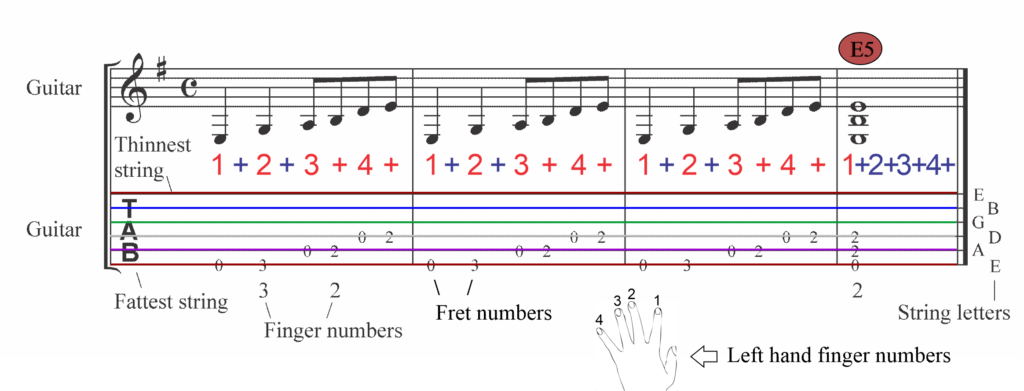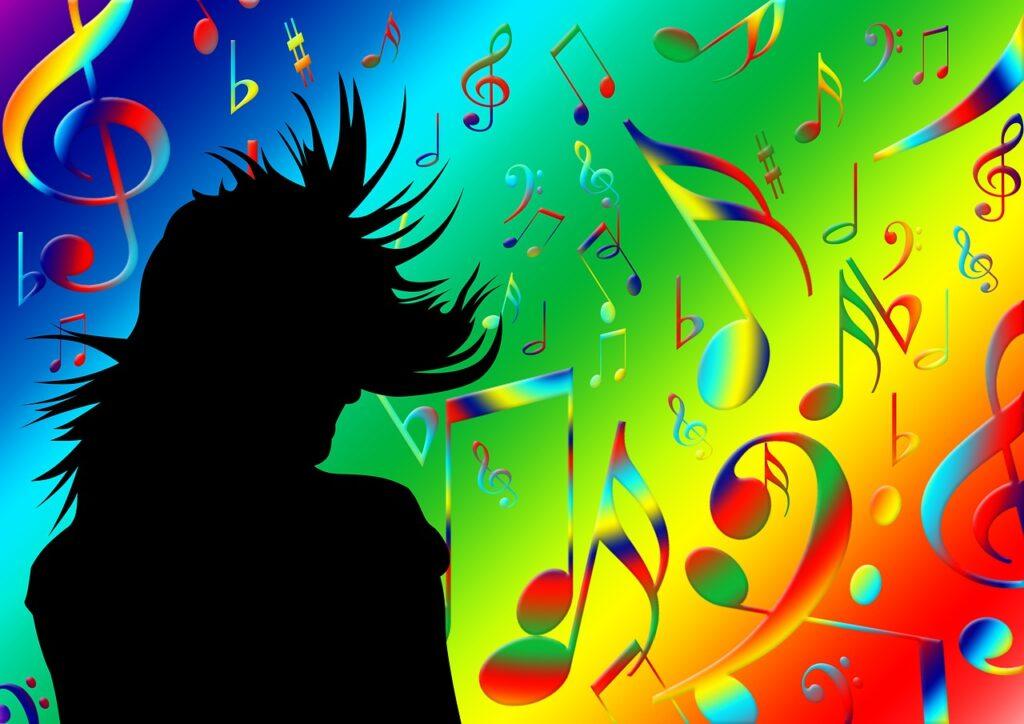Estimated reading time 2 minutes
Table of Contents
Introduction
Do you struggle with reading music notes? Have you always wanted to learn to read music, but found it too hard? Try rainbow colored music notes. This post has stories about musicians who’ve achieved music literacy through color coded music notation. Read more to learn about accurately reading musical notes and the colors of a rainbow.
The stories I’ll tell you will focus on students who have LD and special needs. However, these strategies can be used by any student, typical learner or otherwise.
This article uses technical musical terms. For definitions, see the Glossary at the end of the post.

Accurately Reading Musical Notes and the Colors of a Rainbow Story #1:
“Not only did the learning-disabled and [special needs] students in the experimental group score much higher on the tasks that involved the color-coded notation than on the uncolored notation, but it also appeared that the color-coded notation enabled them to score as high as or higher than the other students…The same students scored rather high [Mean = 10.5] when sight-reading color-coded notation and yet were completely unable to sight-read the uncolored notation, with each student scoring 0 out of a possible 12.” – George L. Rogers (1991)
The stories I have will show the two extremes of the learning continuum. For one student the color coding helped him thrive. Conversely, the other student needed the rainbow colors to be able to learn music at all.
Look at the quote above. Color coding made the difference between special needs students being able to sight read at a level comparable to typical learners versus not being able to read music at all. This was certainly true for a student with amnesia who I once taught.
The colors of the rainbow really helped her with accurately reading the music notes. She’d been in a car accident and had a brain injury. However, using the color coding she learned to play beginning-level, hands-together piano.
She couldn’t hold new skills in long term memory and had to be retrained from scratch every week. Without the color coding, she would’ve been unable to study music at all.
Mobile users: for best results reading the music, tilt your screen 90o to the right.

Accurately Reading Musical Notes and the Colors of a Rainbow Story #2:
The colors of the rainbow really helped this next student to excel at reading music notes. In his words: “Dear Geoff, thank you so much for your patience and dedication to my musical training over the years!
“I don’t think I would be nearly as good a guitarist and musician if I hadn’t been with you. You instilled the confidence to keep working, take risks, and always ask myself ‘What’s the worst that can happen? And, what’s the best that can happen?’
“I applied to four schools, including Berklee and was accepted to all of them… Thank you again, I honestly couldn’t have done it without you.”
This student started lessons with me in seventh grade. He had strengths in some areas, while needing work in other areas. For example, he had a great ear, so I never needed to teach him how to improvise.
However, his IEP said that he had LD and executive functioning issues. He’d had music lessons since second grade. Nevertheless, he couldn’t read music, and his father wanted him to be able to play in middle school jazz band.
Using color coding along with other teaching strategies, he learned of all his jazz band songs. When he graduated from middle school, he earned The George Revelas Award for Music Excellence.
In high school he read and performed music at a high level. About halfway through high school he graduated from the colors, and when he auditioned for music colleges, he didn’t need any accommodations.
If you take nothing else away from this post, I want you to remember that color is a powerful teaching tool.

Videos: How Effective is the Color Coding?
Concluding Thoughts to “Accurately Reading Musical Notes and the Colors of a Rainbow”
Reading musical notes accurately using the colors of the rainbow has helped a lot of students. The stories above centered on students with LD and special needs. However, the colors can help virtually anyone to learn to read music. Learn how to color code sheet music:
- How to Color Code Music Notes
- Playing the Piano with Color Coded Notes
- Playing Piano with Color Coded Left Hand Notes
- How to Color Code Guitar Tab
- Color Coded Quarter Note Clapping
- Color Coded Eighth Note Clapping
- Color Coded Quarter Rest Clapping
© 2023 Geoffrey Keith
Join me for in-person or online lessons today!
Glossary
How to Harmonize in Minor Keys
Do you have a hard time singing minor keys in tune? According to Hagerman and Sundberg, minor thirds are almost as hard to tune by ear as major seconds, and much harder than major thirds. However, sing-along song tracks can help! Read more to learn how to harmonize in minor keys. Estimated reading time 3 minutes.
Read MoreWhat Exactly Does Beat Mean in Hip Hop?
“Maybe I'm old, but what is a beat or beats?” The word beat in Hip Hop doesn’t just refer to the rhythm tracks. Keep reading “What Exactly Does Beat Mean in Hip Hop?” to find out what it is and how it works. Estimated reading time 2 minutes.
Read MoreOnce Sheet Music is All Digital, Why Not Always Colour-Code Notes?
“Once sheet music is all digital, why not always colour-code notes?” Since most sheet music can now come in digital format, will there be any good reason not to color code the notes all the time? I’ve long advocated using color coding for helping special needs students to learn music from sheet music. However, the opening suggestion (by a person on social media) goes one step further. It proposes making a permanent change to how people read sheet music. Click to find out the arguments for and against adopting universal color coded music notation. Estimated reading time 2 minutes.
Read MoreHow to Color Code Music Notes for Successful LD & Special Needs Distance Learning
Based on a scientifically proven method for teaching LD students. Learn how to color code music notes for LD & special needs students. Estimated reading time 6 minutes.
Read More




